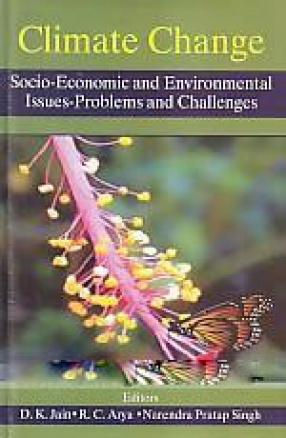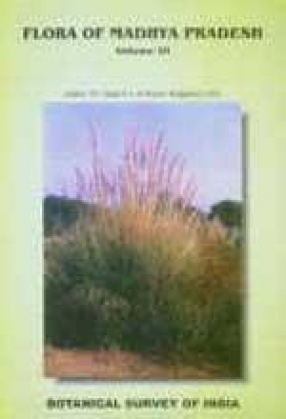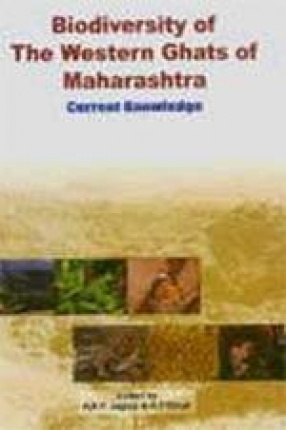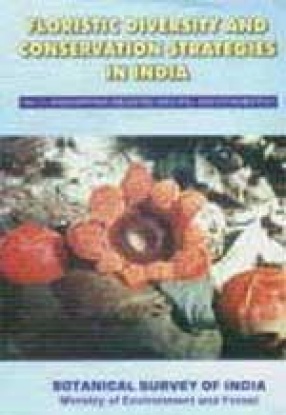
N P Singh

33 books










Spiders are ubiquitous in natural and agricultural habitats. They are useful indicators of overall species richness and health of terrestrial communities. There is no authentic documentation on spider faunal diversity and general ecology. For the past several years, there has been increased interest in the utilization of natural enemies, particularly the predators for the management of insect pests of crops. In nature amongst the biotic agents spiders play a ...



The Flora of Eastern Karnataka, an island plateau covering an area of about 90,000 sq. kms. Have not so far been adequately explored. The present work in (in two Vols.) which fills the void is a systematic survey of the flora of this distinct phyto-geographical region. Based on extensive field study which involved the collection of almost involved the collection of almost 20,000 specimens, it accounts for a total of 1,421 taxa of angiosperms belonging to 140 ...

The BSI is bringing out floristic account of the Maharashtra State in three volumes. The volume containing the account of Monocotyledones has already appeared in 1996. The remaining two volumes deal with Dicotyledones. It is estimated, that presently the state of Maharashtra is represented by 187 families, 1081 genera, 3025 species, 21 sub-species, 145 varieties, one sub-variety and two formas that occur in the wild. Besides, 844 cultivated species have been ...


The state of Manipur is situated in North Eastern India bordering with Myanmar and harbours interesting flora. It offers a rich, scenic grandeur and panaroma of contrasting landscape and many picturesque spots. The state is nature’s paradise for its wild fauna and flora. It harbours over 3000 species of higher plants within an area of 22,327 sq. km and contributes an important source for germplasm. A number of wild relatives of cultivated plants, endemics, rare ...

Plants have played important role in human life. All earlier knowledge regarding plant uses was outcome of the early man’s observations and experiences through trial and error. This knowledge was transferred orally from one generation to another. Their understandings and perfections in using plant resources were unique and are being preserved in tribal communities since ages. But due to intrusion of modern civilisation, the living standard of tribals is ...

Asclepiadaceae: There are more than 250 genera and about 3000 species all over the world. These are mainly distributed in the tropics and in warm-temperate regions, most abundant in Africa south of the equator. In India this family is represented by 43 genera with 243 species including infraspecific taxa, of which five genera are endemic to India. Periplocaceae: There are about 40 genera and almost 200 species all over the world. These are distributed in the ...

Erstwhile Bihar, lying close to the foot hills of Nepal and covering an area of 1,73,877 sq km, harbours a very rich and diverse flora. Its unique phytogeographical position, topography and good precipitation are some of the important factors which are mainly responsible for high degree of plant diversity. The occurrence of different types of forests, ranging from subtropical to tropical and consequently the establishment of three National Parks and twenty ...

The present book, the third and last volume of Flora of Madhya Pradesh, deals with an account of 706 species of angiosperms belonging to 241 genera and 37 families (Hydrocharitaceae to Poaceae) and 7 species of gymnosperms (mostly cultivated) under 5 genera and 4 families.

All the families in the present work have been arranged according to Bentham & Hooker’s (1862-1883) system of classification with adjustment according to their present delimitation. The genera, species and infraspecific taxa are arranged alphabetically which seems more convenient to follow. Nomenclature of each taxon has been checked properly and updated. Complete citation of the taxa, which includes correct name, basionym and synonyms wherever necessary is ...

The present publication of Flora of Maharashtra State: Dicotyledones is in continuation of the Volume I published in January 2000. In the first volume, 70 families have been treated besides exhaustive introductory chapters. This second and final volume deals with the systematic treatment of 91 families (Combretaceae-Ceratophyllaceae) comprising 1319 species, 13 subspecies, 67 varieties and 4 formae belonging to 527 genera occurring in wild and also 437 cultivated ...

The book contains an up-to-date account of family Cyperaceae in the state of Karnataka. It gives a brief history, morphology, distribution, habitat and classification of the family Cyperaceae. For most of the species illustrations have been provided to help in the identification. Detailed description of 163 species, 6 subspecies and 9 varieties coming under 23 genera are given in the book. The work is based on critical studies in different herbaria and collection ...

Integrated Plant Nutrient Supply System proceeding is the compilation of the articles and thoughts generated by the experts from various fields in the regional seminar. The proceeding is having sixteen chapters and each chapter has its own importance. Chapter one deals with fertiliser production, marketing and use in India with special reference to East and North-Eastern region. In chapter two, importance of IPNS and sustainable agriculture discussed whereas in ...

The Flora of Mizoram is proposed to be published in three volumes. The present volume, dealing with general chapters, like introduction, physiography, climate, geology and soil, forests and forest types, botanical studies, forestry, economic plants, floristic diversity, references, key to the families etc. includes taxonomic account of 884 taxa belonging to 403 genera and 90 families from Ranunculaceae to Asteraceae. Of these 172 species and one variety have been ...

The natural vegetation of the district Palamau is now facing a severe threat due to increasing urbanization. The ‘Flora’ may help in listing of several endangered, threatened and rare species. Moreover, it will create an awareness amongst the people as a whole to protect such species from extinction and to take necessary steps for conservation of our ecosystem and environment. Thus ‘Flora’ is an essential inventory in this respect and hence a necessity to ...

Based on the enormous data, accumulated by the scientists of the Botanical Survey of India over a period of more than hundred years, on various facets of the floristic wealth of our country, the department initiated a series on Floristic Diversity and Conservation Strategies in India to take stock of the status of diversity and conservation in various taxonomic groups of Flora of India and related applied aspects. The first volume in the series, covering a ...



Biodiversity is one of the most defining features of the nature, vital for the ecological security of a region and livelihood security of millions of those who critically depend upon it for their daily sustenance. Floristic component of the biodiversity is the major provider of ecosystem services and is basic to meet livelihood needs of not only the human beings but all other animals at large. The judicious management of floristic resources is, therefore, ...
